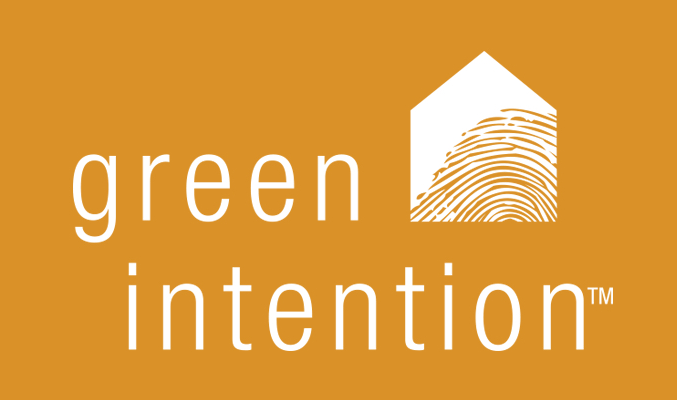Tomorrow, December 7, 2010, I am scheduled to take the LEED for Homes exam. Right now I am taking a break from studying by writing about studying. (It actually is a break!)
The exam will be two parts: each two hours and each 100 multiple choice questions, given at a Prometric test center. I will not be allowed any notes, calculator, or anything during the 4-hour exam-taking period.
The first half is the LEED for Green Associates exam. This exam by itself, if I pass, would give me the LEED Green Associate credential, with no specialty. The U.S. Green Building Council recently changed its testing tiers to offer this more general LEED credential. But general it is not! It is absolutely about the LEED rating system, but it applies almost 100% to the commercial sector. As LEED was initially introduced for the commercial sector, of course this makes sense. So, I find myself learning all about the LEED rating systems for New Construction, Core & Shell, Existing Buildings, and Commercial Interiors. I purchased some practice exams from Every Blue as well as from Green Building Education Services. The practice exams test very specific knowledge, like:
“Where should CO2 sensors be located for LEED credit in Outdoor Air Delivery Monitoring?” (Answer: “3′ to 6′ high on the wall.”)
Or, “Is Site Development-Maximize Open Space eligible for exemplary performance?” (Answer: Yes.)
Or, “What percentage of a building’s occupants must be satisfied with a building’s thermal comfort?” (Answer: at least 80%.)
The second half is the LEED for Homes exam. I should know this stuff — I’ve been blogging about it since May! On my first few practice tests, though, I scored in the low 70s — possbily a passing score, but with a slim enough margin to make me uncomfortable about the prospect of passing. After all, I really have no idea how closely the online practice exams resemble the real exams.
I findd myself primarily studying for the LEED for Green Associates exam, because I do not have any experience with most of the subject matter. When I switched over to study for LEED for Homes, I found that my brain started confusing the two. There are many similarilities in these systems with LEED for Homes: they all have the goal of reducing energy and water usage and improving indoor air qualiaty. Many of the referenced standards are the same. (These require straight memorization. For example, the organization that sets standards for VOC concentrations in carpet and carpet pads is the Carpet and Rug Institute, and the standard in Green Seal. The standard that addresses air ventilation is ASHRAE 60.2; thermal comfort is ASHRAE 55, ductwork is ASHRAE 52.) These referenced standards are the same across all LEED exams. But when it comes to the details (and that is what we are tested on), they are VERY DIFFERENT! Here are some examples:
- In LEED for Homes, you can get 1/2 point each for using materials that are “environmentally preferable” — recycled/reclaimed, low emissions, and/or locally extracted/harvested/manufactured. Each component of the home (except flooring) must be 90% compliant for each 1/2 point. In all other LEED rating systems, the measurement is based on percentage of overall cost. So if 10% of the material used is recycled, for example, you get 1 point (2 points for 20% and a third exemplary performance point for 30%). These are very different measurements for the same intent.
- In LEED for Homes, low emissions materials are classified under the “Materials and Resources” section. In all other rating systems, they are under “Indoor Air Quality” and also follow different criteria for garnering points.
- In most rating systems, there is a “Regional Priority” section that gives bonus points for LEED credits already earned. LEED for Homes has no such thing.
- In LEED for Homes, the base level of certification requires 45 points; silver is 60 points; gold is 75 points; platinum is 90 points (out of a total 136 points available). In all other rating systems, 40 is certified, 50 is silver, 60 is gold, and 80 is platinum (out of a total 110 points maxiumum). And you need to know these levels.
- In LEED for homes, there are 18 prerequisites that must be met. In all other rating systems, there are only 8 prerequisites. And they are different: for instance, there is no prerequisite for Water Efficiency in LEED for Homes. In the other rating systems, buildings must be 20% below the estimated baseline water usage based on the 1992 Energy Policy Act. In order to measure the baseline cases, you have to memorize standard occupant usages and flow rates–like males typically use a regular flush once/day and a urinal twice per day in offices; urinals use 1.0 gallon per flush.
I guess my point is to complain that those of us who want to specialize in LEED for Homes seem to be unfairly penalized. If I were studying to be a LEED AP BD+C (Building Design and Construction), the material for the first half and the second half would be primarily the SAME — the second part would just be more detailed. But since I am really interested in sustainable homes, I have to learn and study everything about all the LEED rating systems. If I look at the bright side, though, all this studying will make me more of a generalist when it comes to green building. So if the housing market does not pick up, I can always move to the commericial sector. Lucky me. Back to studying…
